The Isle of Skye was the next place on our itinerary, but we took a round-about way to get there. Our tour manager, Nigel, tries to accommodate people, and there are a lot of us with Scots heritage. Whenever possible, he will point out a clan center or mention the name of a place and how it relates to a clan. We made a lightning stop at Dunrobin Castle, which was the home of the Sutherland clan. Later in the day we saw a sign for the Murchison Memorial, which is one of Tom’s Scottish ancestors. We weren’t able to get to he memorial, but Tom got a picture of the sign.
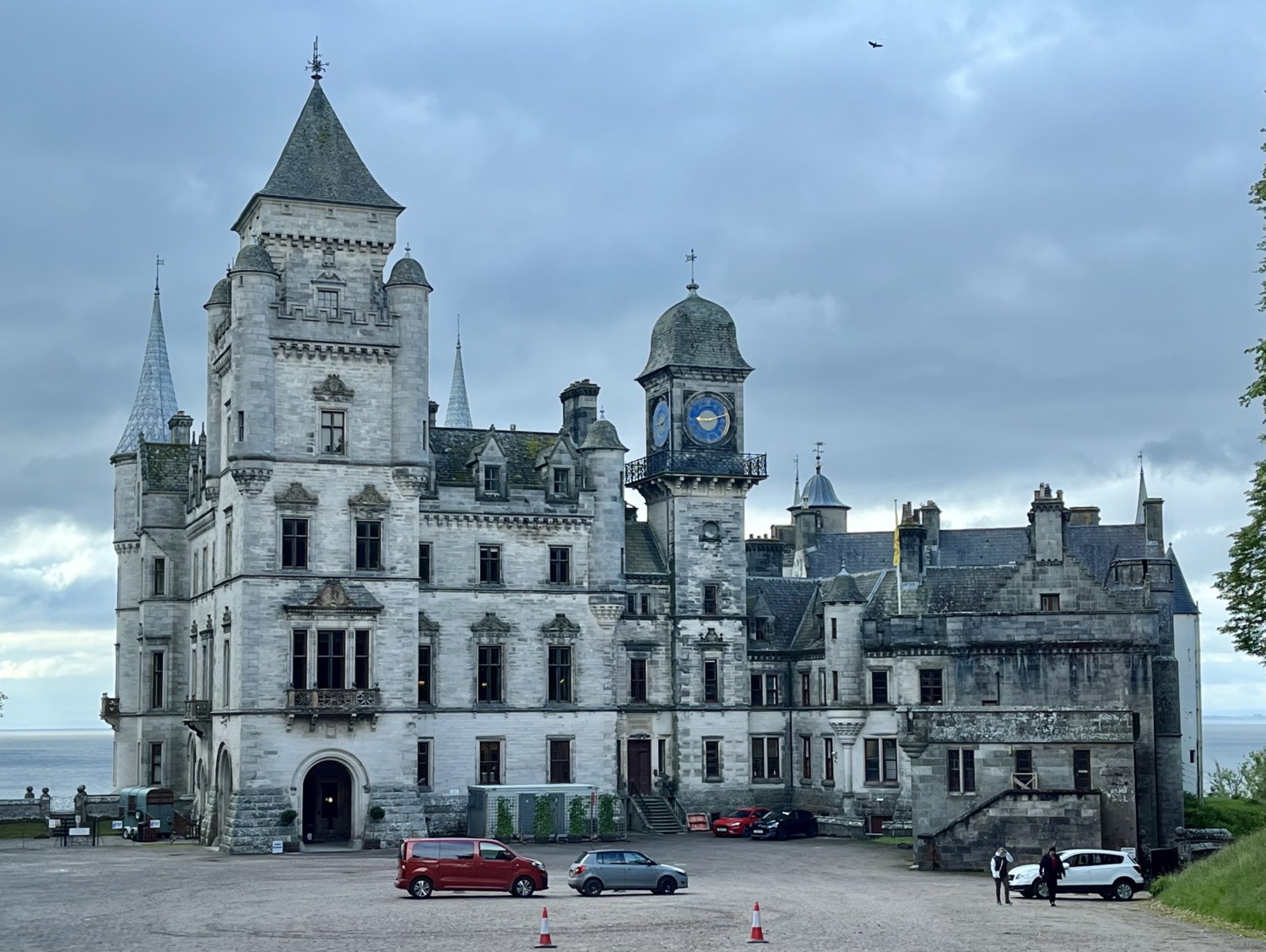
We stopped for our first break at the Falls of Shin, which had a very nice Visitors Center and Museum. It always takes a while for everyone to do the necessary, so I enjoyed looking at the informational displays. It was a “dreich” (gray and wet) morning, just like the day before, so I didn’t walk outside. There was an unexpected benefit, however. We saw about 10 rainbows from the bus as we traveled. We passed several “button bains,” houses where they can’t see any neighbors.

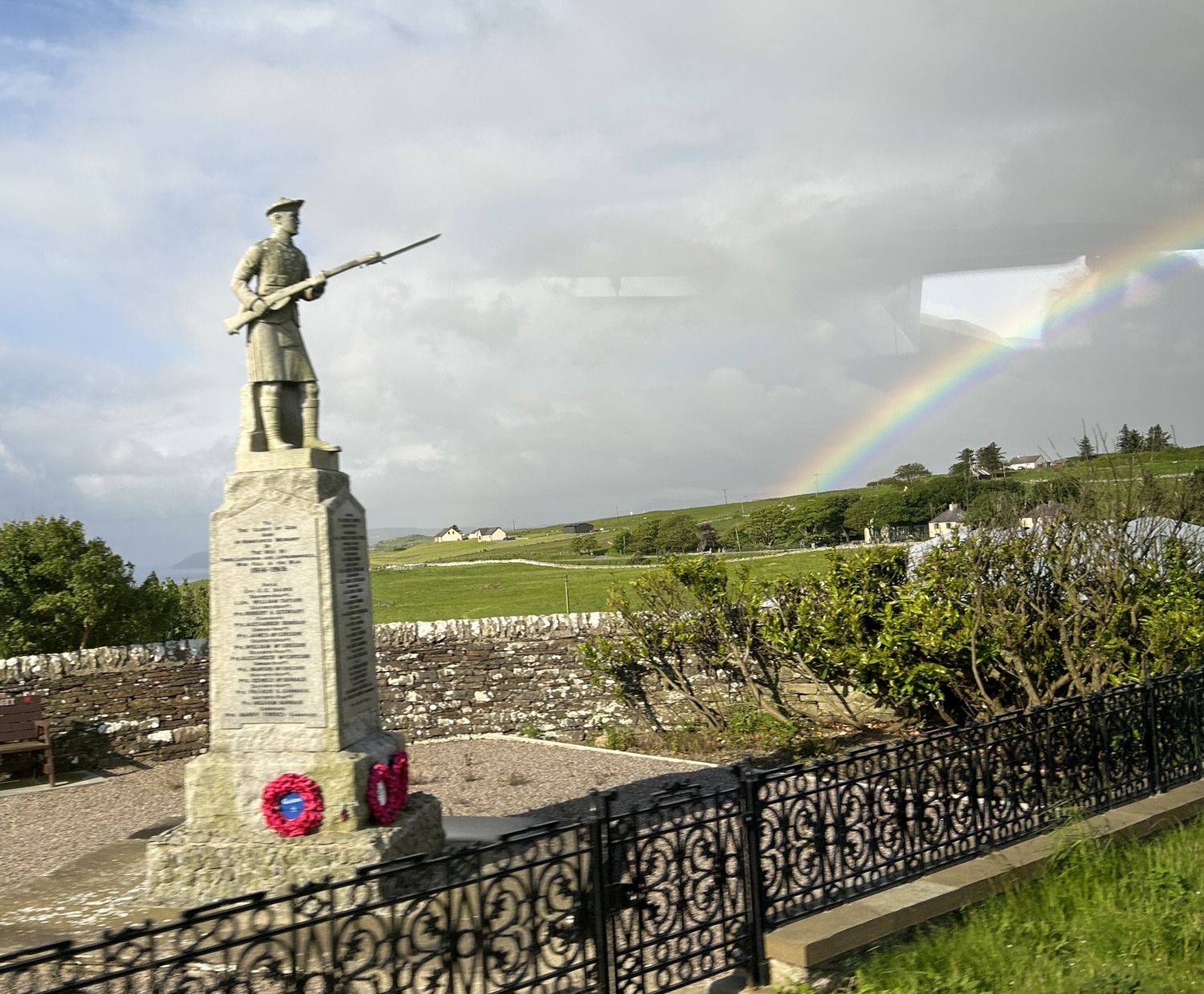
The tour continued into the North West Highlands Geopark, a UNESCO Global Geopark. There was some absolutely stunning scenery, but it rained all morning so we didn’t stop much. The towering mountains disappeared into the clouds and rain. The one place we stopped for restrooms, I ran up the steps next to us, snapped a few pictures, and then ran back back to the bus. I was dripping when I got back.
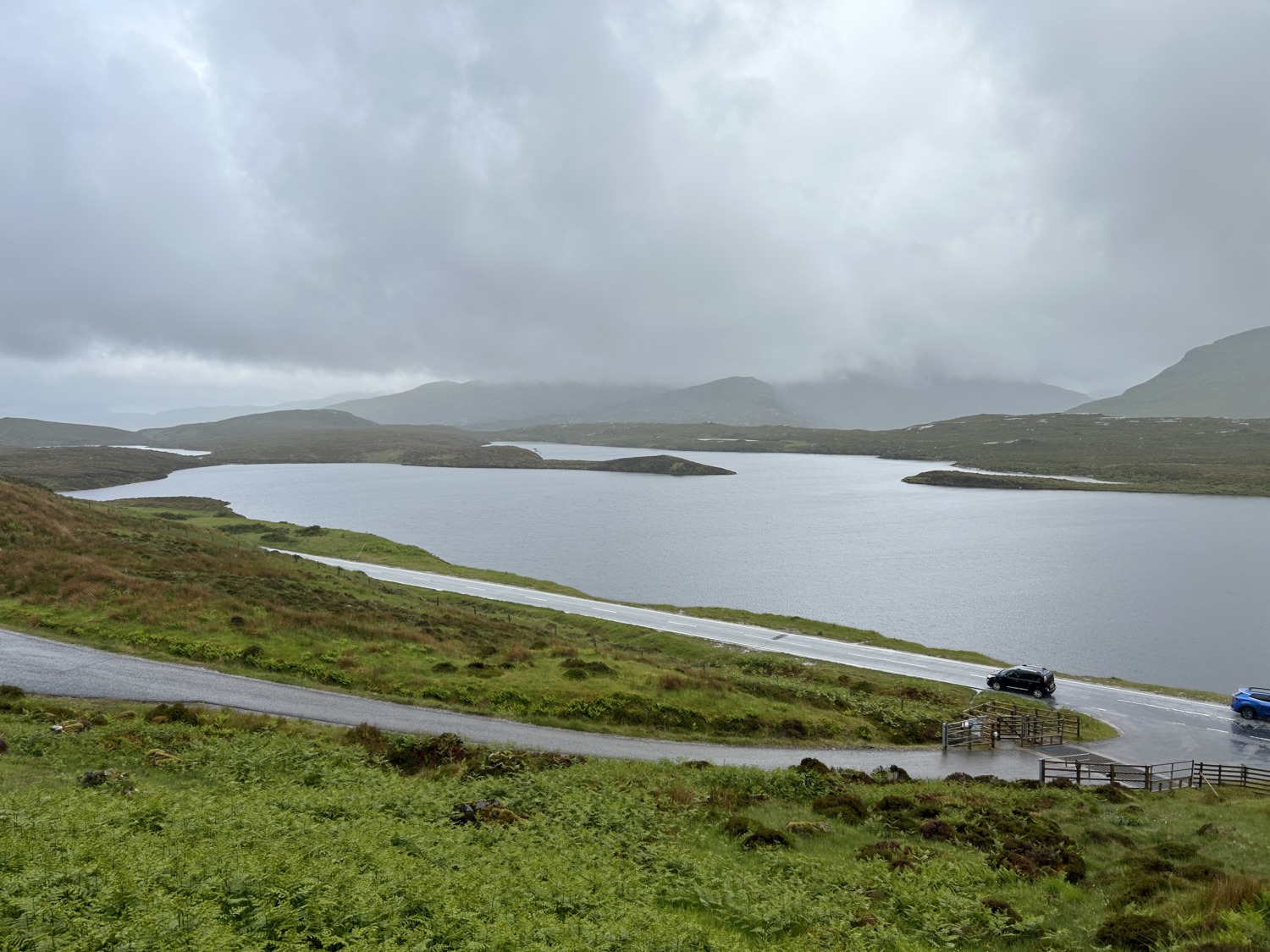
The day was so cold and rainy that our guide, Nigel, told us this joke. “A Highlander’s skin is naturally blue. He has to be out in the sun for a while before he turns white.” Nigel told us lots of jokes and some of them were funny!
Nigel also explained the Scottish Highland Clearances. The clearances started in 1750 when Scottish landlords, evicted the tenant farmers on their lands in order to increase the size of their pastures. The landlords had been clan leaders but gradually came to see themselves as owners of their clans lands. The farmers (members of the clans) were sent to live in crofts in fishing or industrial villages. This caused a reduction in status and income that the farmers resented. Some of the landlords paid the passage for the farmers to emigrate to the United States or Australia. You can see the remains of many of these one or two room crofts in the small villages along the coasts.
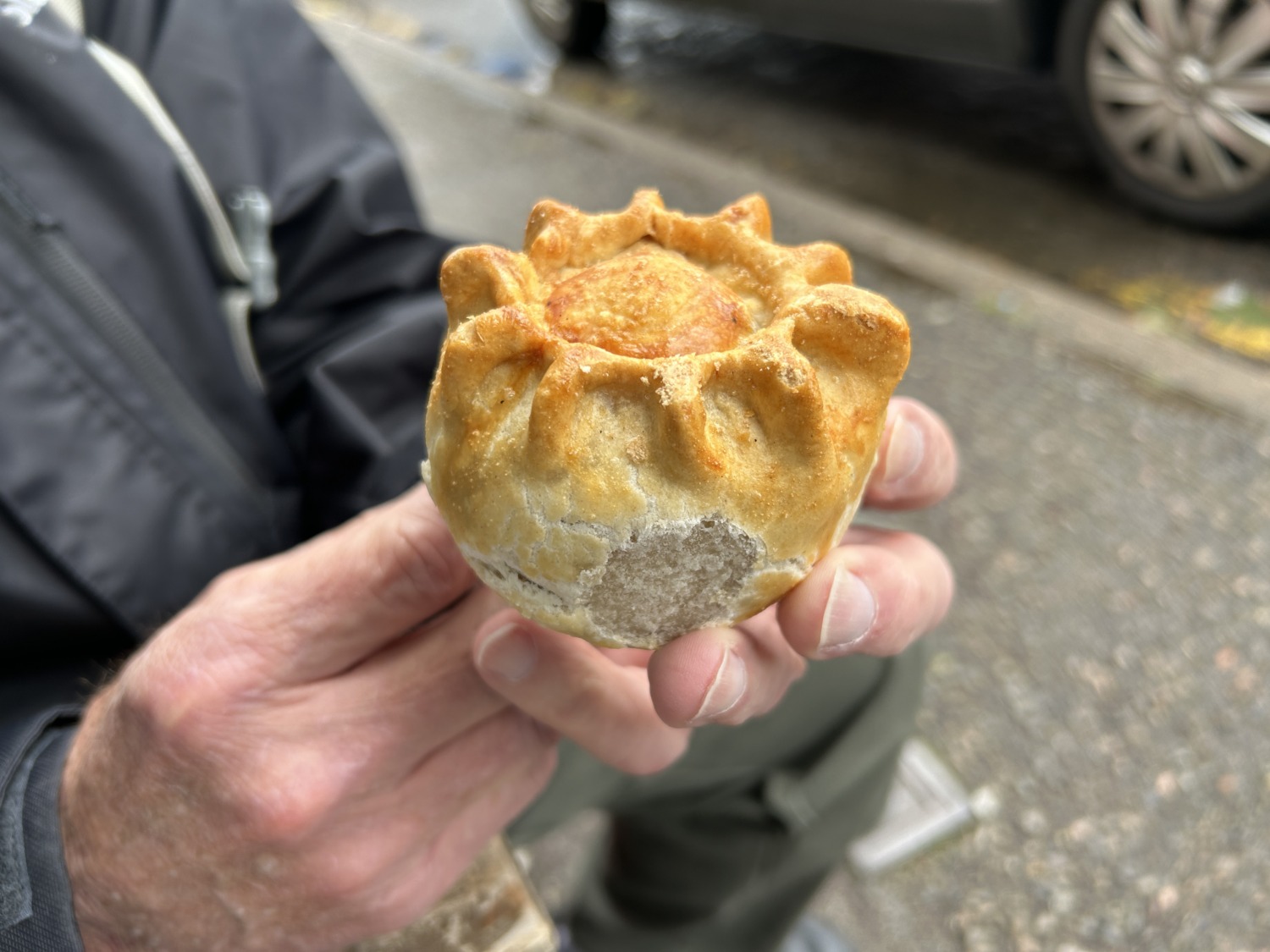
We ate lunch in Ullapool which didn’t look like much but had a nice variety of restaurants. Tom and I chose JoJo Cafe and got two pork pies. I also got a brownie and Tom got some more millionaire’s shortbread. The rain stopped for a bit so we were able to eat outside. After our nice lunch, we climbed back in the bus and finally drove over the bridge to the Isle of Skye.
The Isle of Skye has some fabulous scenery. It is very wild looking with high cliffs at the seaside and towering moors. Many people visit Skye these days because of the Outlander series of books and television show. It is also known for being the place where Bonnie Prince Charlie escaped after the Scottish defeat at Culloden. The song “Over the Sea to Skye” tells of his escape with the help of Flora McDonald.
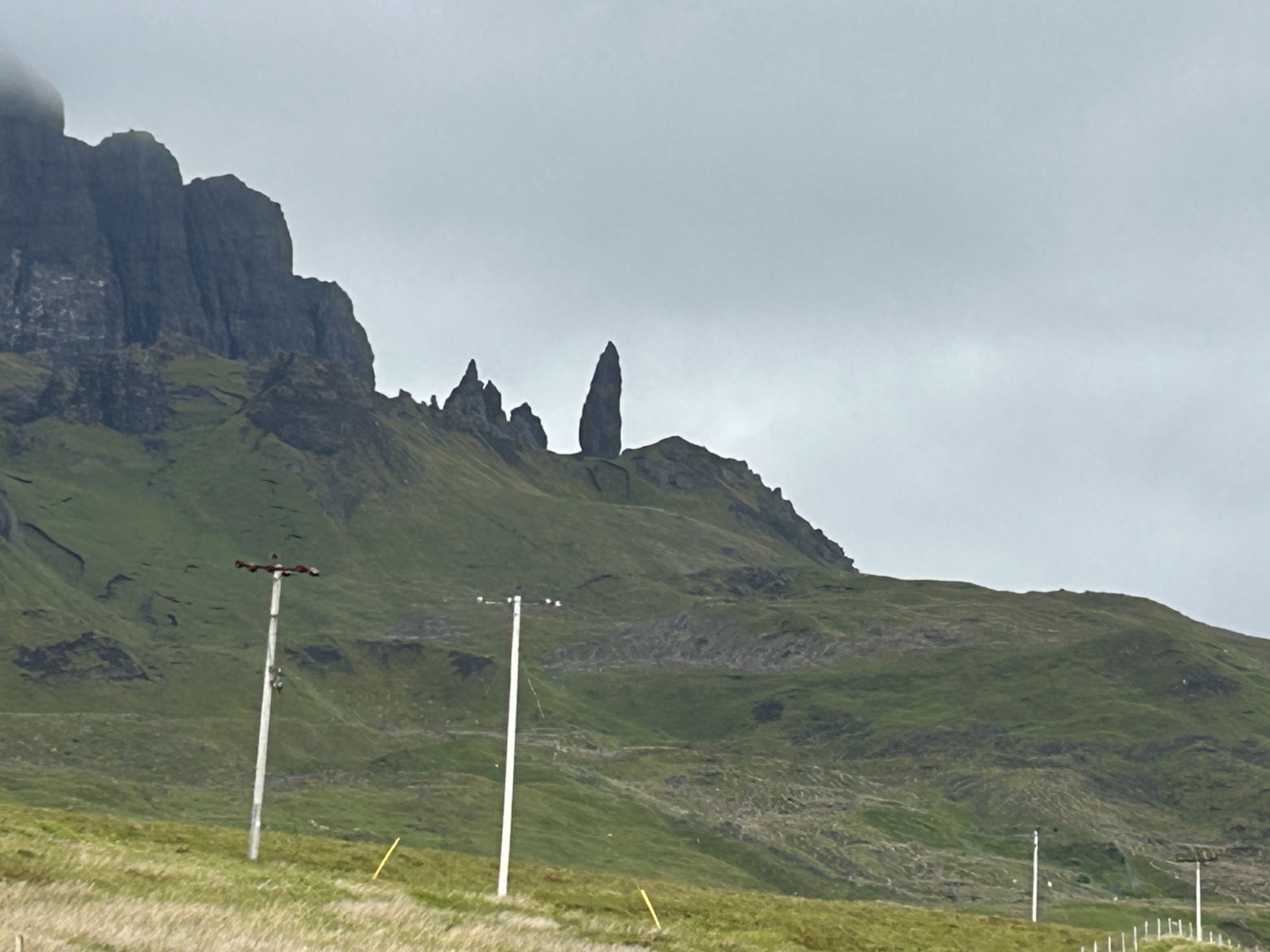
A local guide came on the bus to tell us the stories and history of the island. We saw Kilt Rock and the stunning waterfall in front of it. It definitely deserved more than the five minute stop that we gave it. The rock, Old Man of Storr, is 165 feet tall. It was raining pretty hard for most of our tour, but the rain finally stopped at Kilt Rock. It ended up being the best picture of the day.
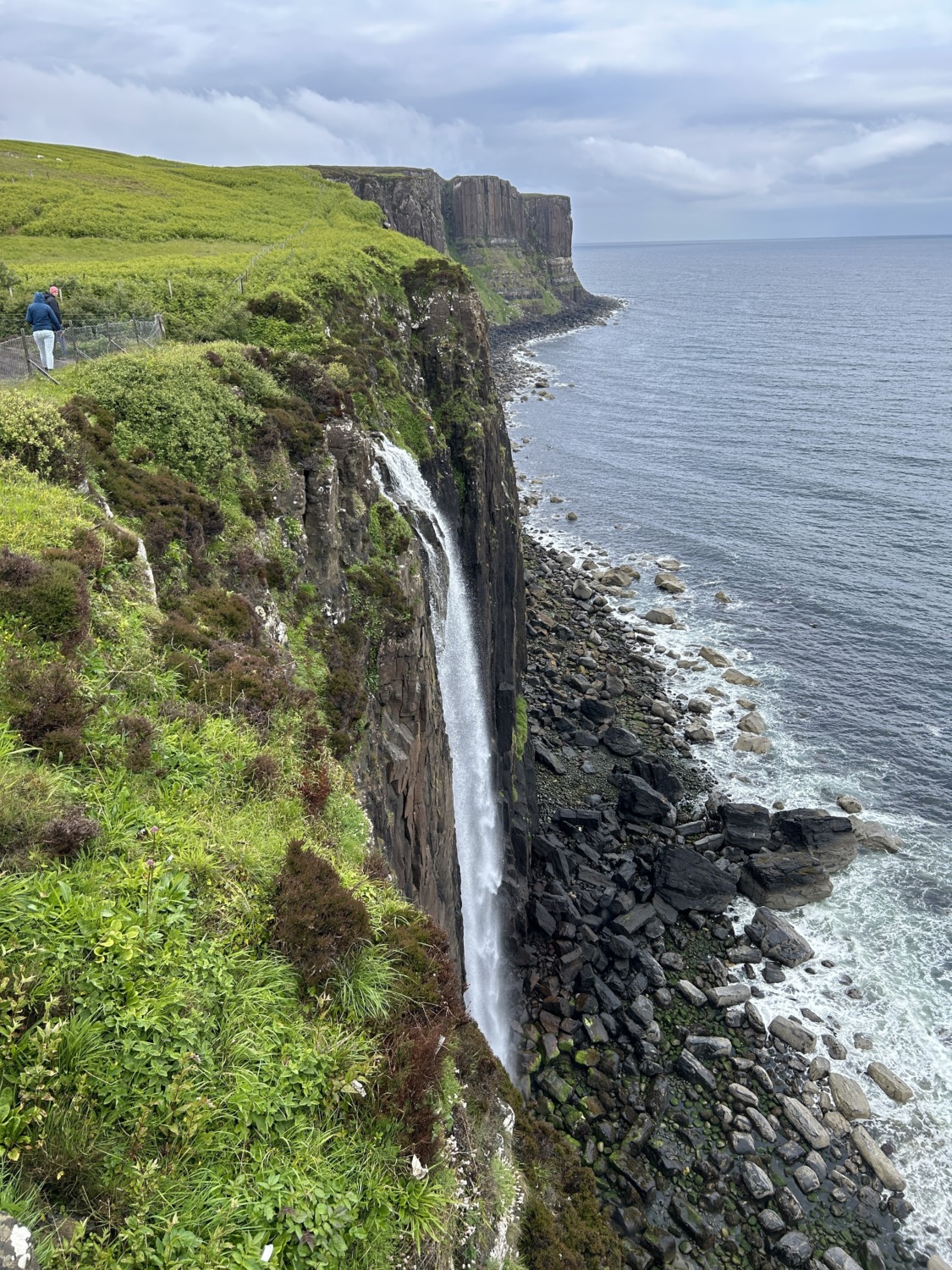
Our group spent the night at the Dunollie Hotel in the little town of Broadford, just over the bridge. The hotel wasn’t much but Tom and I enjoyed walking around the town after supper. We found a war memorial, a lovely little bridge, and a couple of shops we would have liked to check out. Unfortunately, the shops were closed by the time we found them.


